Summer and Southern Flounder
❝There are several types of flounder in North Carolina waters. The two most commonly sought by recreational anglers are the Summer (fluke) and Southern flounder. These aggressive predators, which we catch in both the ocean and the Outer Banks sounds, are fun to hook and delicious to eat.
In this article I discuss some flounder life history, techniques, and tips for successful flounder fishing on the Outer Banks.
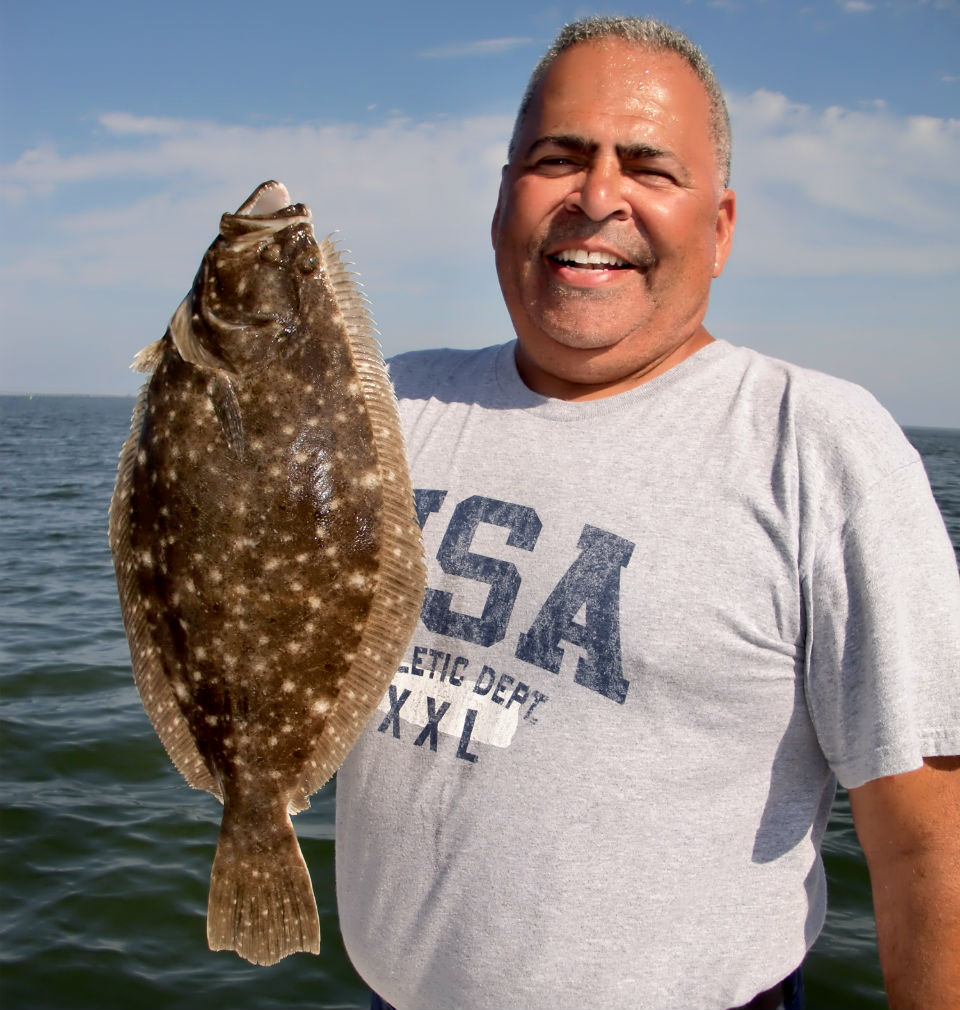
The Roving Eye
At hatching, the eyes of a flounder look like any other fish. As a flounder begins to grow, one eye migrates to the other side of its head until the fish ends up swimming on its side. Depending on the species, the right eye might move to the left side or the left eye might move to the right.
Patterns of Disguise
At maturity, a flounder (flatfish or flattie) always swims with its patterned side up. A flounder camouflages itself with special pigment cells that help it look like sand, mud, or a pebbly bottom. It lies flat on the sound or ocean floor to hide from predators and to ambush its prey.
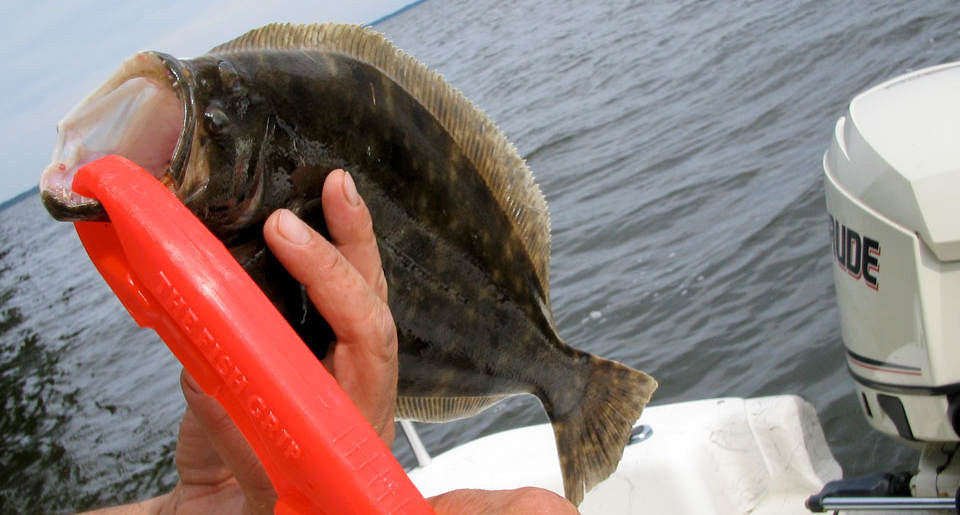
Flounder Rigs
Rods, Reels, and Line
Medium-weight spinning rods with 10- to 15-pound line will cover most situations. Braided line is a good choice; it is sensitive with little stretch. This line allows the angler to feel the bottom. I always splice in 10 feet of monofilament line at the tip of my braid to compensate for this.
Hooks and Lures
Your choice of hook styles and sizes vary—a long-shanked J hook, Kahle hook, or octopus hook in sizes 1/0 to 4/0 will all work. The rigs in this article can be used with bare hooks or be dressed with beads, spinner blades, and deer hair as an attractor. Buck-tail jigs or plain jig heads with paddle-tail and twister-tail bodies also work well.
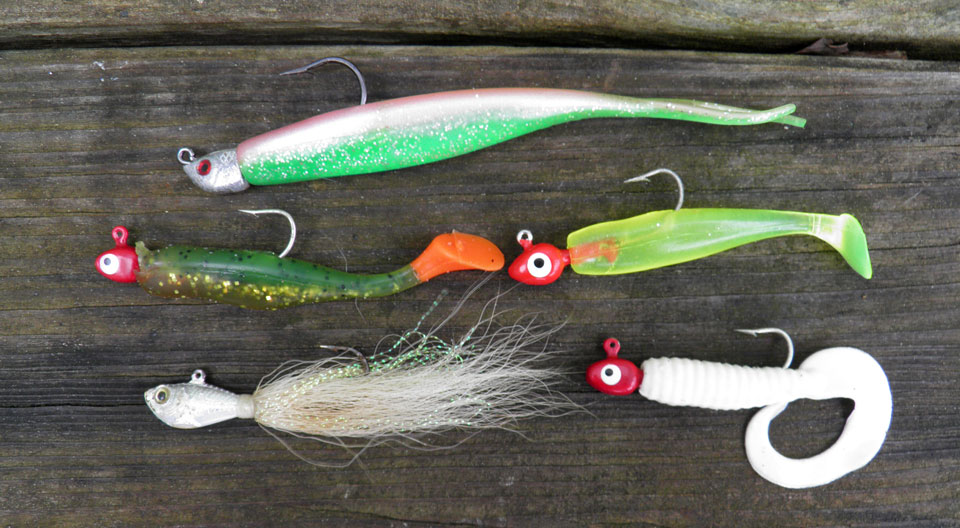
Use a Carolina rig or a three-way swivel rig to present live and dead baits.
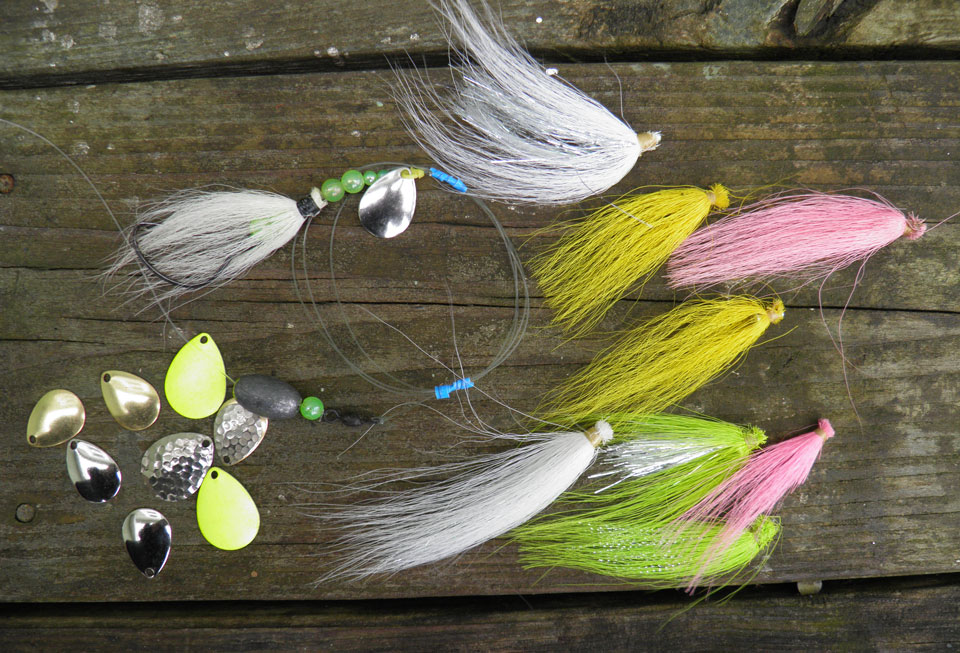
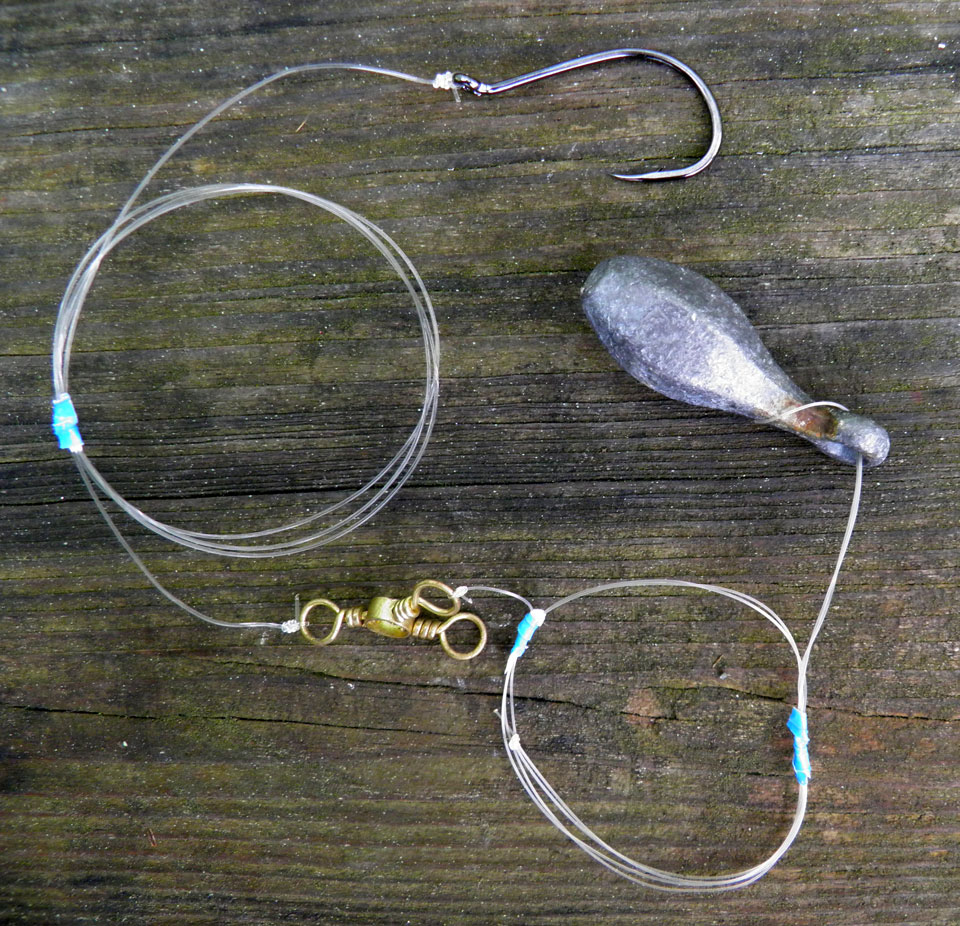
Live Baits
- mud minnows
- finger mullet
Strip Baits
- squid
- Bluefish
- mullet
- croaker
Flounder Fishing Techniques
It is important to learn the difference between a bite and the normal feel of the rig dragging along the bottom. When you do get a bite, feed out a little line, reel down to the fish, and then set the hook.
Drifting for flounder is the best technique for covering the most water. Casting and slow retrieving lead-head jigs with grub bodies is also highly effective.
More Tips
- Try casting and dragging jigs with occasional twitches.
- When fishing with a jig, reel down to the fish and set the hook as soon as you feel a bite.
- For a change in approach, use a jerk shad and a faster retrieve.
Where to Fish for Flounder
Ocean and Sound
You will find flounder everywhere in the waters around the Outer Banks.
Drift over inshore sandbars and over spots where water depths abruptly change. Flounder will hang tight to the banks—this is often a productive place to cast.
Structures hold fish. Drift, cast, or vertical jig around channel markers, oyster beds, bridges, and docks.
Surf Casting
When you fish from the beach, cast jigs or Carolina rigs with bait and then slowly drag them back through the surf zone.
This is a cool fish! It looks funky, fights hard, grows large, and makes tasty table fare. Good luck! Everyone catches flounder sooner or later. I hope these tips make it sooner for some of you.
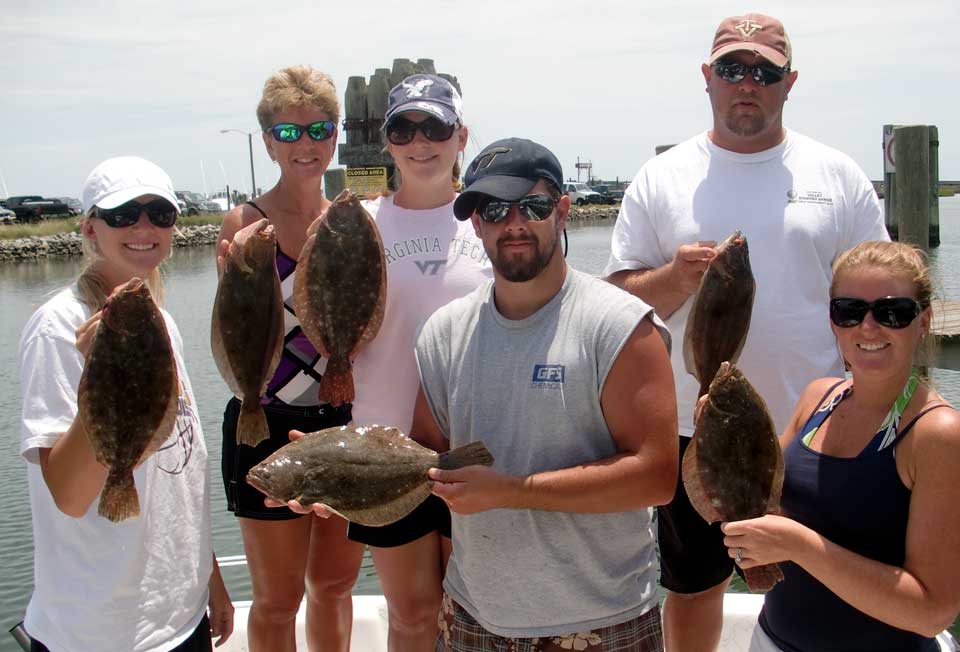
If you want to learn more about how to catch flounder on the Outer Banks, contact me about a half-day or evening fishing charter. Let's go flounder fishing!❞
